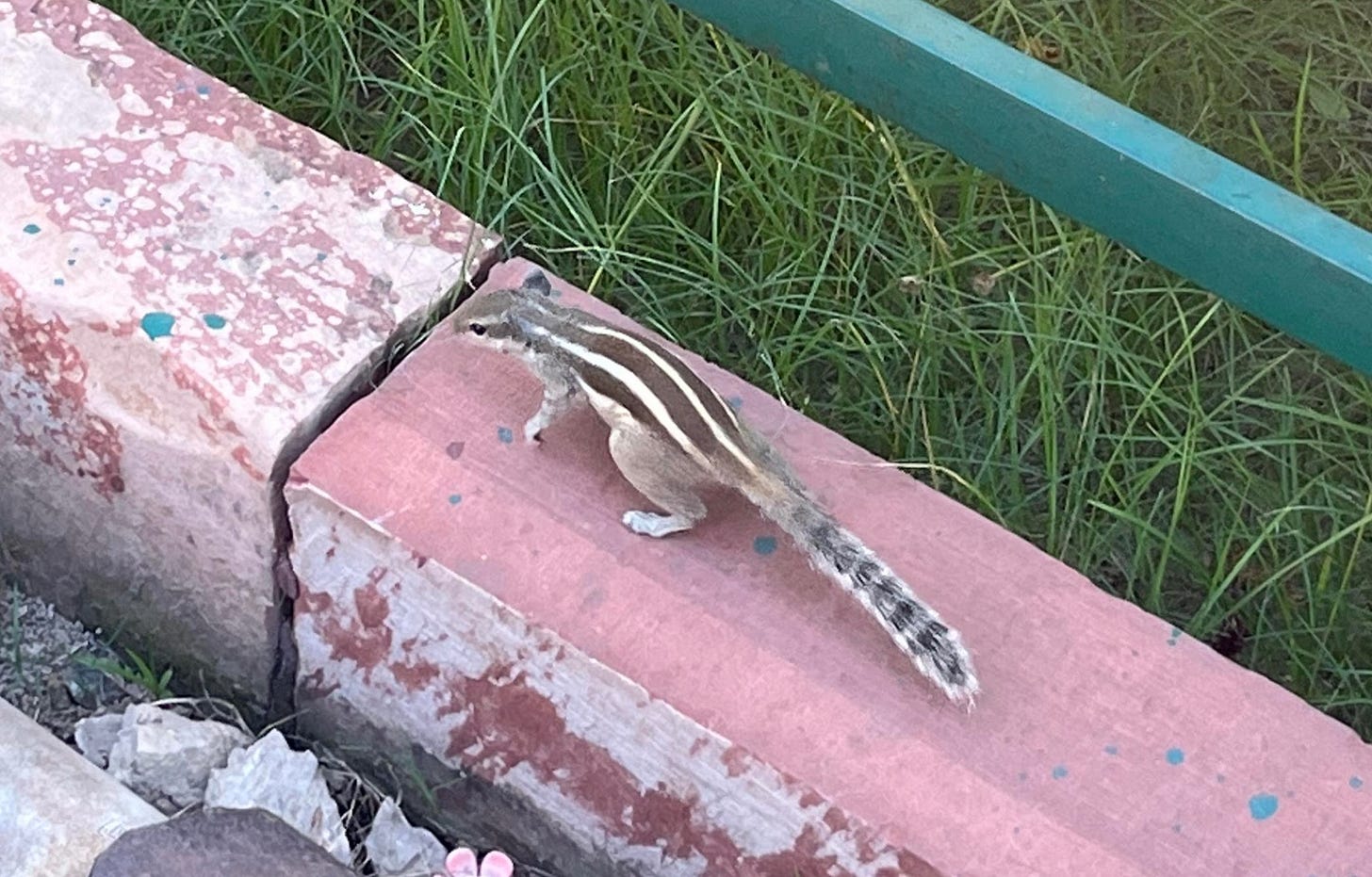In America, ordering chai or some other drink with chai in its name can leave you with any one of a wide array of milky spiced beverages. In my two weeks in India, chai was pretty much always the same: a strongly steeped black tea with milk and some combination of sugar, cardamom, and ginger. I had a few cups each day, across relatives’ homes, hotel breakfasts, and roadside restaurants.
I was initially surprised at how little variation there was. For example, the Wikipedia article suggests that there are many possible spices that are used in chai, and that everyone might use a slightly different blend. It says that most chai will definitely include ginger and cardamom, and on top of that might also add cinnamon, cloves, anise, black pepper, nutmeg, etc. During my trip, I didn’t notice this ingredient variation: most chai only used cardamom and maybe a little ginger. I don’t think I really encountered any of the other warm spices listed above.
Personally, I actually enjoyed this simplicity. I have a tendency to always ADD MORE THINGS!!! in the kitchen, because it helps me keep things interesting and exercise creativity. In this case though, I learned a lesson on how restraint can lead to not only arguably better results, but also more consistent ones. Consistency is a valuable goal in its own right. There’s nothing more disappointing than starting your day with a whole quart of bad chai because you felt like experimenting too much, something I’ve done on more than a few occasions by adding too much black pepper or star anise.
I think the short ingredient list of Indian chai also makes it seem easy to reproduce, which, at least for me, hasn’t really been the case. There’s a lot of “feel” in the preparation of chai — no one really follows rigid recipes, for example. Somehow, it’s just hard to write down explicit rules for steeping times and amounts of milk / sugar / cardamom / ginger.1
Anyway, another side effect of simplicity & consistency is that I really became quite perceptive of differences, which was nice. For example, one of my favorite cups was from the last day of my trip at a hotel in Tenali (a small city an hour south of Vijayawada). My brother and I were the first ones at breakfast, and our tea had an incredibly strong cardamom aroma — in particular, much stronger than the previous day’s, even though it was the same hotel. We concluded that, maybe, they add the cardamom pods to a large pot at the start of service and re-up the tea powder and water as the pot depletes, but not the cardamom, so the flavor is most potent at early hours. At another stop (a family friend’s house), we were served irani chai, which tasted extra creamy due to the addition of milk solids (khoya), but was cut with a hefty ratio of spicy ginger. My favorite chai was at 7, a relatively new and popular stop on the much-travelled Hyderabad-Vijayawada highway. It tasted perfectly balanced in a way that’s hard to capture in words.
A final observation was that, across the board, chai serving sizes are tiny, at least by American standards.2 A standard cup was at most 4oz or so, another exercise in restraint: you finish the cup desperately wanting a few more sips. One of our family friends mentioned that this is probably because people drink chai so many times a day — anyone you visit will offer you a cup, and it’s not an offer you really reject.
Back in my home kitchen, I’ll apply these new lessons in brewing chai (goodbye, cinnamon), but will unashamedly return to guzzling out of my American-sized thermally insulated mug.
But here is my attempt: https://rajivmovva.com/2022/02/14/masala-chai.html




